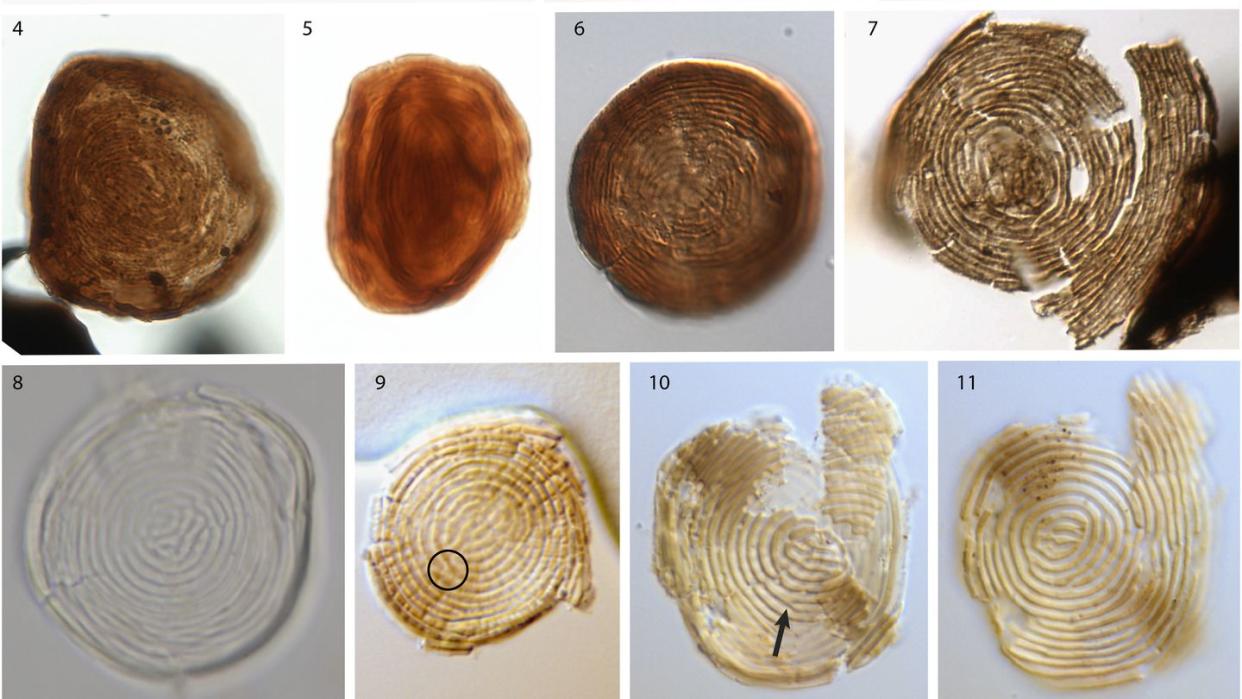These Fossils Have Been Around for Millions of Years—but They're Not Plants or Animals

Cyst-like euglenoid organisms provide a scientific conundrum, as they are neither plants nor animals. They’re... something else.
Scientists studying fossils finally found a link between cysts from hundreds of millions of years ago and modern-day Euglena.
The link opens up the potential for finally understanding an organism that has survived at least 400 million years and multiple mass extinctions.
A multi-national group of scientists was scouring over 500 papers on ancient cyst-like organisms, trying to understand a strange group of fossils. But it was—of all things—a YouTube video that really opened the door to understanding a 400-million-year-old line of one of the most problematic organisms around—the euglenoid.
These fascinating organisms can’t really be defined as either plant or animal. Plants photosynthesize, and animals eat. Euglenoids do both. They eat organic goop while also converting CO2, water, and light into sugars. And for a long time, we had no idea how long they’d been around.
In a study published in the journal Review of Palaeobotany and Palynology, a team of researchers announced that they have established, for the first time, a 400-million-year evolutionary history of the euglenoid Euglena. It turns out that not only are these things ancient, they’ve survived two mass extinctions.
The team began by studying well-preserved fossil specimens of cyst-like organisms believed to have once lived in the murky bottoms of shallow fresh-water ponds. “The structure of the wall does not resemble anything that is known,” Wilson Taylor, biologist at the University of Wisconsin, said in a statement. “The ribs are not ornaments, like in pollen and spores, but part of the wall structure. The layered structure of the walls is also clearly different from many other fresh-water green algae.”
In 2012, the team realized that these strange cysts they were seeing could in fact be euglenoid cysts. But there were a few problems with that proposition.
First, there’s not much fossil record to document euglenoid evolution. We have evidence of them over the years, but very little to connect these ancient structures to modern-day organisms.
And second, these cysts have been given many names over many years. Tracking which studies were actually about the cysts that were of interest to the team took a huge effort, and culminated in a literature review of over 500 papers.
But even with all of this new evidence, the researchers were missing the critical piece of the puzzle. See, no one had ever seen modern-day euglenoid encyst in a way that would produce the fossils described throughout these articles and studied over the years.
But eventually, the research team caught a glimpse of a YouTube video in which Fabian Weston observed a sample of pond water from New South Wales under a microscope. In that video, researchers saw the behavior they’d been waiting to see—the modern-day Euglena acted like the fossilized specimens, balling up and growing a thick, ribbed wall. It encysted.
That was enough—the study authors could finally link modern-day euglenoids from the Australian pond to fossil cysts hundreds of millions of years old. “This opens the door for recognizing even older examples, for example from Precambrian records that go back to the very root of the eukaryotic tree of life,” Paul Strother, research professor in the Department of Earth and Environmental Sciences at Boston College, said in a statement. “Now that we know which organisms produced those cysts, we can also use them for paleo-environmental interpretations.”
The team was surprised by the structure's ability to span multiple scientific eras. Examining the fossilized ultrastructure of the cysts using transmission electron microscopy (TEM), they noticed the prevalence of the organisms within sediments associated with mass extinction events. This lead the researchers to believe that these organisms can offer clues to better understanding the world’s major upheavals.
“These organisms have endured and survived every major extinction on the planet,” Bas van de Schootbrugge, professor of marine palynology and paleoceanography at Utrecht University in the Netherlands, said in a statement. “Unlike the behemoths that were done in by volcanoes and asteroids, these tiny creatures have weathered it all.”
You Might Also Like

